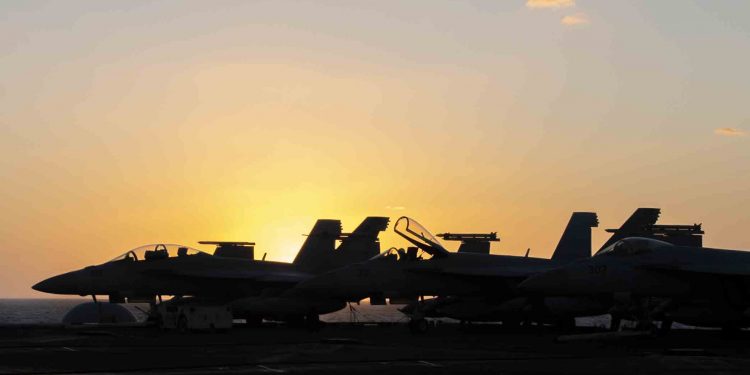The USS Nimitz Carrier Strike Group is departing the Central Command area of responsibility and moving into the U.S. Indo-Pacific region, Pentagon Press Secretary John F. Kirby announced today.
“We want to thank all the men and women aboard the ships in that strike crew and the squadrons who supported Central Command now for more than 270 days, ensuring our national security and deterring conflict in a very critical region of the world,” Kirby said.
The carrier is homeported in Bremerton, Washington. It is now in the 7th Fleet area of responsibility and can be called upon for operations, training or humanitarian exercises there.
The Nimitz’s departure means there is no U.S. carrier operating in the Central Command area of operations. Kirby said Secretary of Defense Lloyd J. Austin believes America has “a robust presence in the Middle East.” U.S. service members are based in many nations in the Persian Gulf and there is more than enough airpower to counter any adversary.
Kirby said Austin has constant discussions with U.S. Central Command commander Marine Corps Gen. Frank McKenzie, as well as other combatant commanders. Austin must balance requirements from various parts of the world, and the United States doesn’t have an unlimited number of aircraft carriers.
These decisions are carefully weighed, the press secretary said. “Every decision that we make with military forces — air, ground or naval — and certainly, decisions that you make with respect to a capital asset, like an aircraft carrier and its associated, supporting Strike Group is a decision driven by a frank assessment of the threats in the area, and also a frank consideration of the capabilities themselves,” Kirby said. “So, absolutely, the secretary was mindful of the larger geostrategic picture when he approved the movement of the Carrier Strike Group from the Central Command area responsibility.”
Also playing into the decision is the length of the deployment for the Nimitz sailors and their families. The Nimitz and supporting ships have been deployed longer than is typically required. Austin and CentCom and Navy officials must consider the wear and tear on the sailors, the ships and the aircraft.










